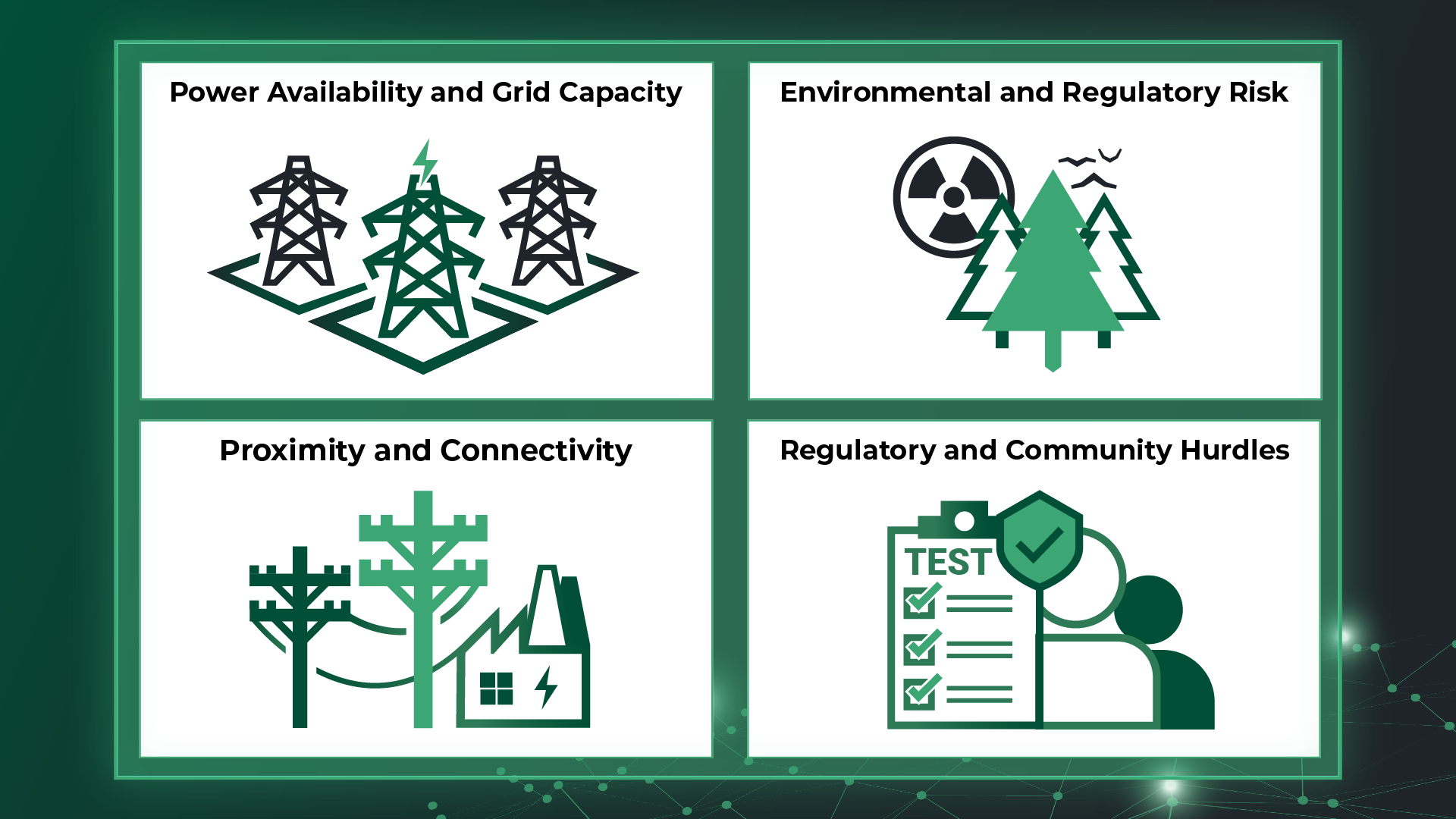Choosing the right site for a data center is a high-stakes decision that can make or break your long-term strategy. From power grid capacity to zoning conflicts and future scalability, site selection affects every aspect of your project’s success.
In this guide, we’ll walk through six common pitfalls in data center site selection and show how Acres.com helps you avoid them using complete land intelligence.
Key Considerations for Data Center Site Selection
Modern data center planning requires balancing uptime, efficiency, and adaptability. The wrong site can lead to spiraling operational costs, service disruptions, or even full shutdowns.
A well-selected data center location, by contrast, minimizes long-term costs while supporting resilience and scalability.
Emerging technologies and climate volatility now demand a more forward-thinking data center site selection approach, one informed by nationwide data, risk modeling, and complete land intelligence.
1. Mitigating Natural Disaster Risks
Failing to assess a site's vulnerability to natural disasters is among the most critical mistakes in data center location planning.
- Seismic zones demand specialized structural design.
- Flood-prone areas pose major risks to power and hardware.
- Extreme weather events can trigger operational failures.
Using Acres to Mitigate: With Acres, you can overlay FEMA flood zones, seismic maps, wildfire perimeters, and other hazard layers to visually screen out high-risk areas before a site visit.
2. Evaluating Power Infrastructure
AI’s power needs are stretching grids to their limits, making infrastructure vetting more essential than ever. Overlooking power availability can lead to delays spanning years or the end of a project entirely.
- Unstable power grids and single-provider dependencies are frequent outage triggers.
- Limited grid capacity and single-source dependencies increase the risk of costly outages.
- Poor network connectivity undermines performance.
Using Acres to Mitigate: Acres lets you map existing power infrastructure, identify nearby substations, and analyze utility corridors at a glance. You can layer in grid capacity, operational status, operator/utility ownership, and other critical power metrics to assess long-term viability.
3. Navigating Regulatory Hurdles and Zoning Challenges
Even on ideal land, regulatory hurdles or zoning challenges can stall or kill projects.
- Restrictive zoning or environmental laws may block development entirely.
- Lengthy permitting processes slow development.
- Community backlash over water use, noise, or land aesthetics can derail a project.
Using Acres to Mitigate: Acres helps you identify land parcels already zoned for industrial use or nearby alternatives. Layer in conservation areas, future land use, and public land boundaries to assess permitting complexity. Use demographic and parcel data to anticipate community concerns before they become barriers.
4. Assessing Fiber and Network Connectivity
Data center performance hinges on fast, reliable fiber access. Choosing a location with limited or outdated fiber infrastructure can throttle your operations from day one.
- Sparse fiber coverage can result in higher costs and longer lead times to establish connectivity.
- Single-provider regions increase vulnerability to outages and limit redundancy.
- Lack of connections to major internet routes can limit performance and make scaling more difficult.
Using Acres to Mitigate: Acres helps you visualize existing fiber networks. Use map overlays to compare multiple parcels and ensure each location supports your performance, redundancy, and scalability goals.
5. Planning for Future Data Center Expansion Needs
Short-sighted data center planning can lead to bottlenecks later.
- Surrounding parcel ownership could block growth.
- Lack of utility corridor space hinders infrastructure scaling.
- Topography or environmental buffers may limit usable acreage.
Using Acres to Mitigate: Plan beyond the immediate footprint. Acres shows adjacent ownership, utility paths, and environmental or land use constraints so you can plan for future growth.
Achieving Long-Term Success in Data Center Development
Long-term success in data center development starts with selecting land that’s resilient, well-connected, and scalable. Avoiding early pitfalls like disaster risks, power limitations, or regulatory red tape, can save millions and prevent future bottlenecks.
Acres delivers everything needed for smart site selection in one platform. With comprehensive data on zoning, utilities, risk exposure, and land use, developers can confidently move forward on parcels that align with their technical, operational, and strategic goals.
Get the Acres Data Center Playbook and see how complete land intelligence helps you qualify sites faster, uncover hidden opportunities, and build with confidence.
